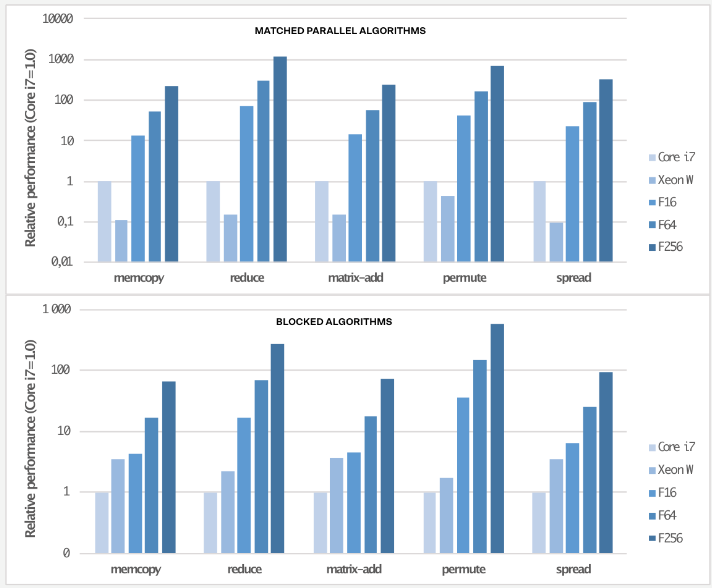 EMERGING TECH
EMERGING TECH
 EMERGING TECH
EMERGING TECH
 EMERGING TECH
EMERGING TECH
Finnish startup Flow Computing Oy today revealed seemingly outlandish plans to transform the chip industry with a new Parallel Processing Unit that it says can boost the performance of any central processing unit by an incredible 100 times.
The stunning claim came as the company announced $4 million in pre-seed funding from a number of Nordic venture capital firms and business entities. Butterfly Ventures led the round, with participation from FOV Ventures, Sarsia, Stephen Industries, Superhero Capital and Business Finland.
Finland’s VTT Technical Research Center, a state-backed research lab, originally developed Flow’s technology and remains a stakeholder of the company, though the intellectual property behind the tech now belongs to Flow.
Flow, which was spun out of VTT, says it can boost processing performance by up 100-fold by integrating its PPU companion chip with any CPU. It claims that its PPU chips are fully backward-compatible, which means they can be integrated with any kind of CPU to provide that acceleration for any existing software or application, without making changes to its code.
The exact level of performance boost is determined by the number of PPU cores integrated on-die, the startup explained. It adds that it has optimized licenses for its technology for every tier of the CPU market, including mobile, supercomputer and personal computer CPUs.
According to the startup, its PPU chips get around one of the primary limitations of existing CPUs, namely their inability to do parallel processing. Today’s CPUs are super-fast, and can switch among different tasks millions of times per second, but despite this, they are still a one-way street, as they can only perform one task at a time.
This limitation means that, even with their nanosecond-level responsiveness, today’s CPUs are still extremely inefficient in the way they carry out instructions, simply because they must finish one task before they can proceed to the next.
Flow says its PPUs get around this limitation by transforming any CPU into a multi-lane highway. Although the CPU still only performs one task at a time, Flow’s PPU improves traffic management to such an extent that tasks can be moved into, and out of, the processor much faster than before.
The startup has yet to validate its technology for any official CPU, but has showcased its capabilities on various field-programmable gate arrays, which are chips that can be programmed before they’re deployed, to make them more efficient at a very specific task. It has also performed a number of simulations that it says certify its performance claims.

The chart illustrates improvements in an FPGA PPU-enhanced chip versus unmodified Intel chips. By increasing the number of PPU cores, Flow continually improves performance
Flow is hoping to create a business model that’s somewhat similar to Arm Ltd., the British chip design firm that simply licenses blueprints to other chipmakers. It aims to persuade chipmakers such as Intel Corp., Advanced Micro Devices Inc., Apple Inc., Nvidia Corp. and Qualcomm Inc. to license its technology.
Whether those discussions will bear fruit remains to be seen. One of the main challenges for Flow is that it will need to persuade chipmakers to integrate its technology at the chip design level. That’s a big ask, because chipmakers would need to invest significant resources in order to do this, and doing so would likely cause serious disruption to their long-term development plans.
Still, the scale of Flow’s performance gains, combined with the fact that chipmakers have only been able to squeeze out incremental improvements in their CPUs in recent years, may be enough to convince someone. After all, if Flow’s really can double the processing speed of any CPU, it’s probably worth implementing, no matter how disruptive it might be to chipmakers’ existing plans.
The startup has at least gotten the attention of several “major semiconductor vendors,” and although it didn’t name any names, it says it will have more “technical details” to share later this year.
Flow co-founder and Chief Executive Timo Valtonen said advances in CPU performance have slowed to the point where the CPU has become the “weakest link” in computing.
“A new era in CPU performance has become a necessity in order to meet the continuously increasing demand for more computing performance, driven to large extent by needs in AI, as well as edge and cloud computing,” he said.
Support our mission to keep content open and free by engaging with theCUBE community. Join theCUBE’s Alumni Trust Network, where technology leaders connect, share intelligence and create opportunities.
Founded by tech visionaries John Furrier and Dave Vellante, SiliconANGLE Media has built a dynamic ecosystem of industry-leading digital media brands that reach 15+ million elite tech professionals. Our new proprietary theCUBE AI Video Cloud is breaking ground in audience interaction, leveraging theCUBEai.com neural network to help technology companies make data-driven decisions and stay at the forefront of industry conversations.